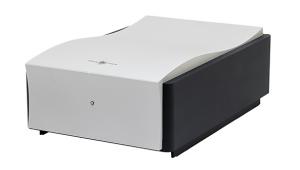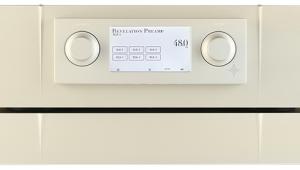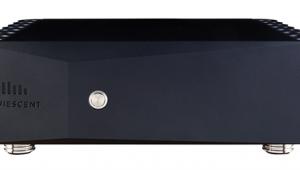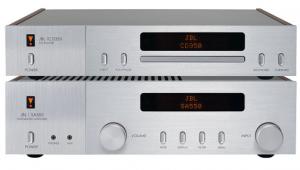VAC Master Preamplifier/Signature 200iQ Pre & Power Amplifier Page 2
To explain the copious amounts of hard-wiring, he said he chooses to 'utilise many "old school" techniques if/when/where there are good reasons to do so. In comparison to printed circuit boards and ribbon cables, the extensive use of point-to-point, hand-wiring designs allows us many more degrees of freedom in the selection of conductor material, size, geometry, and insulating dielectric, all of which have profound implications for the "voice" of the component'.
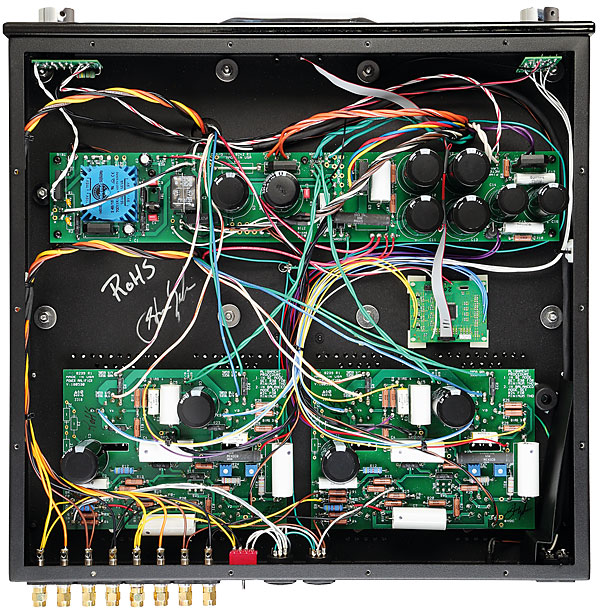
He also prefers mechanical switches 'with very pure contact materials and high contact force. These deliver a superior level of sonic detail and naturalness relative to the now-common use of relays or FET switches for signal routing, and also have lower levels of distortion, microphony, and stray capacitance. As a side benefit, they allow the control knob to indicate the setting directly, rather than requiring a display readout'. And if further justification of the cost is required, Hayes told us, 'I personally audition each and every VAC instrument, be it new, updated, or repaired, and only approve them for shipment when they sound as they should'.
![]() It's A Knockout
It's A Knockout
With so many inputs begging to be tried, in both single-ended and balanced modes, I played CDs and SACDs via the balanced outputs of three different DACs, and open-reel tape via RCAs and XLRs (my Otari is balanced-output-only). None of my tonearms terminate in XLRs, so phono listening was undertaken only via the Master Preamp's single-ended inputs. I tried three MCs and two MMs, and my reaction each time around was that this is a true vinyl-lover's set-up.
 What threw me was starting my sessions with open-reel tape, and the wide-open Broadway performance of Fiddler On The Roof [RCA FTO-5032]. Before even focusing on the sound, whether the sublime violin work or Zero Mostel's distinctive vocals, my attention was grabbed by the sense of space. The recording is huge-sounding regardless of the system, and really does convey the notion of a massive theatre. It's almost a distraction, but a rewarding one.
What threw me was starting my sessions with open-reel tape, and the wide-open Broadway performance of Fiddler On The Roof [RCA FTO-5032]. Before even focusing on the sound, whether the sublime violin work or Zero Mostel's distinctive vocals, my attention was grabbed by the sense of space. The recording is huge-sounding regardless of the system, and really does convey the notion of a massive theatre. It's almost a distraction, but a rewarding one.
Via this VAC set-up, this stage bordered on the cavernous. Performer placement was so precise that you could trace any movement (and I do not claim to know how 'live' was the recording session) with the smoothest of lateral transitions. If you're a soundstage and imaging obsessive, this will knock you out. But it begged a comparison I was dying to make: I dug out the same recording on LP [RCA LSO-1093], despite my declared prejudice in favour of tape.
Here the Master Preamplifier's phono stage was going to be challenged not to better the sound via 7½ips open-reel tape – that is simply not possible – but to see how much it could close the gap. The A/B comparison was an ear-opener, because the VAC phono stage is so lush, rather than hygienically forensic, that it was more of an exercise in degrees of analogue excellence. In other words, it tested the cartridges as much as it did LP-vs-tape.
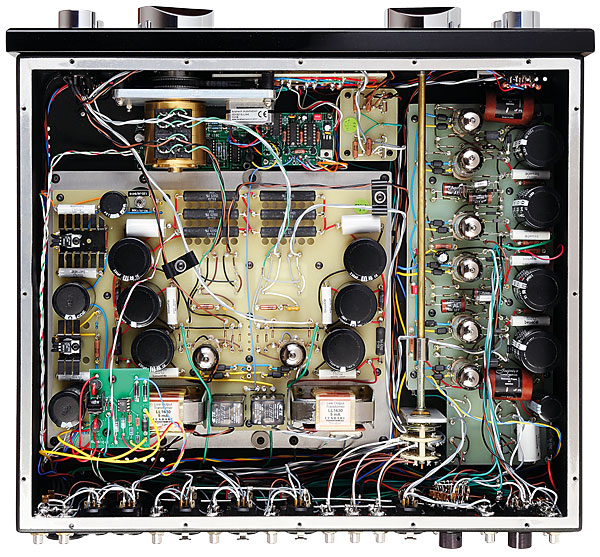 <>
Cry Freedom
<>
Cry Freedom
Let's just say that this was the closest I've heard yet of an LP approaching the utter command of a tape. The inherent weaknesses of vinyl (no, I'm not gonna launch into that diatribe) were minimised such that the TechDAS TDC01 Ti MC [HFN Sep '14] displayed remarkable dynamic swings and attack I hadn't accessed before. Allied to the inherent silkiness and warmth of the VAC Master Preamp, with the seemingly limitless power reserves of the Signature 200iQ, it was a sound that proclaimed freedom from constraint, with even the bass nearing the unleashed capabilities of tape. The biggest giveaway, if you're curious, was deeper stage depth with tape, but vinyl playback was still dazzling.
With the remastered version of The Doors' Morrison Hotel [Rhino/Elektra R2 627602], Morrison's voice was revealed to possess subtlety and nuance that also approached the open-reel tape [Elektra X5007], and the gap was smaller because the latter was 3¾ips. I was utterly seduced by the sinuous, supple guitar work, the VAC pairing exhibiting a way with textures that I'm sure would enable aficionados to identify the make of strings used by Robby Krieger on 'Maggie M'Gill'.
Human Behaviour
The vinyl set also contains the CD, so that, too, was exploited to show format differences, but there will be no CD-bashing here as the VAC amps have an ameliorative effect on digital. Yes, even streaming.
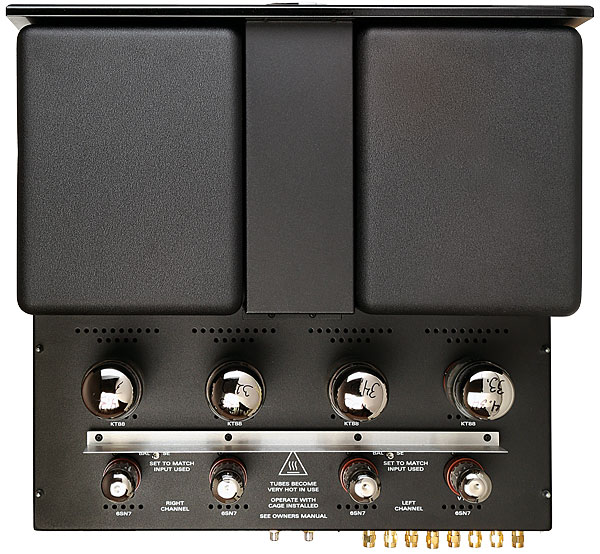
Probably the most overwhelming display of the system's prowess via vinyl came with the admittedly-magnificent One-Step release of Patricia Barber's Café Blue [Impex IMP6035-1]. Because this is a lean recording with just Barber on piano and a guitar/bass/drums trio, recorded with subtlety, the VAC system simply glowed – and I don't mean the light from the valves. Fed material that oozes finesse, the VAC pre/power neither enhances nor constrains: it simply lets the music breathe.
I do realise that seems a contradiction if I've described the VAC combination as tending toward the warm, but that is a sensation of an arguably moot nature, rather than a readily-identifiable sonic artefact like 'dry bass' or 'crisp transients'. They just seem more human, more lifelike than many over-etched, kick-you-in-the-gut amplifiers, and nowhere was it more evident than on Barber's arresting handling of 'Ode To Billy Joe'.
If you crave intimacy, especially if you are partial to vocals, you need to hear this set-up through LS3/5As, however incongruous that might seem. Then again, what they do with the Wilson loudspeakers...
Hi-Fi News Verdict
A hint of schizophrenia here, but purely positive: I love the balance between old school and modern. VAC has lavished these units with cost-no-object niceties like that step-driven volume control, while eschewing new valve types in favour of venerable KT88s. The sound reflects this with detail and scale to match the best of solid-state, yet with luscious warmth to never let you forget it's a tube affair. Or a love affair...





